Overcoming Challenges After Total Knee Replacement: A Guide to Recovery and Empowerment

In this article, we’ll explore some strategies to help you walk without a limp and manage swelling following a total knee replacement (TKR) surgery. We’ll also provide motivational quotes to keep you inspired and hopeful throughout your recovery journey.
Motivational Quotes for Perseverance and Strength
- “Success is not final, failure is not fatal: It is the courage to continue that counts.” – Winston Churchill
- “It does not matter how slowly you go as long as you do not stop.” – Confucius
- “Believe you can and you’re halfway there.” – Theodore Roosevelt
- “Strength does not come from physical capacity. It comes from an indomitable will.” – Mahatma Gandhi
- “It’s not about how hard you hit. It’s about how hard you can get hit and keep moving forward.” – Rocky Balboa (Sylvester Stallone, from the movie Rocky)
Importance of Patience in Recovery
Understanding the Healing Process
Healing after a TKR surgery takes time, and it’s essential to be patient with your body as it recovers. Remember that everyone’s journey is different, and your progress might not align with someone else’s timeline. Trust in your body’s ability to heal, and focus on making small, consistent improvements.
Setting Realistic Expectations
It’s crucial to set realistic expectations for your recovery. Understand that setbacks are a natural part of the healing process, and don’t be too hard on yourself when they happen. Keep a positive mindset and remind yourself that progress is measured in small steps, not leaps.
Strategies for Walking Without a Limp
Focus on Proper Gait Mechanics
Working with your physical therapist to improve your gait mechanics can help you walk without a limp. Concentrate on maintaining proper alignment, weight distribution, and muscle engagement while walking. Practice these techniques regularly to build strength and muscle memory.
Gradual Progression
Begin by walking short distances and gradually increase the length and duration of your walks as you gain strength and confidence. Take breaks as needed, and be patient with your progress. Remember, consistency is key.
Utilize Assistive Devices
Using a cane, walker, or other assistive devices can provide additional support as you regain your strength and balance. Consult with your physical therapist for personalized recommendations on the appropriate device for your needs.
Tips for Managing Swelling
Elevation and Compression
Elevating your affected leg and applying gentle compression with a compression stocking can help reduce swelling. Aim to elevate your leg above the level of your heart for 20-30 minutes, several times a day. Consult your healthcare team for guidance on using compression stockings.
Ice Therapy
Applying ice packs to the swollen area for 15-20 minutes several times a day can help alleviate inflammation and discomfort. Always wrap the ice pack in a towel or cloth to protect your skin.
Gentle Exercise and Movement
Engaging in gentle exercises and movements, as directed by your physical therapist, can improve circulation and help reduce swelling. These may include ankle pumps, heel slides, and leg raises.
Staying Positive and Motivated
Connect with a Support Group
Joining a support group, such as the Facebook group you’re a part of, can provide encouragement, motivation, and understanding from others who are going through a similar experience. Share your successes and challenges, and learn from the experiences of others to help you stay positive throughout your recovery.
Celebrate Small Victories
Acknowledge and celebrate even the smallest improvements in your recovery process. Each step forward, no matter how minor, is a testament to your perseverance and strength.
Focus on the Big Picture
Remember that your ultimate goal is long-term recovery and improved quality of life. While it’s essential to address your current challenges, also keep the big picture in mind to maintain perspective and motivation.
Conclusion:
Recovering from a total knee replacement can be a challenging journey, but with patience, perseverance, and the right strategies, you can overcome obstacles and achieve your goals. Remember to stay positive, utilize the support of your healthcare team and peers, and celebrate every victory along the way.
Keep moving forward, and you’ll find yourself walking without a limp and managing swelling more effectively in no time.
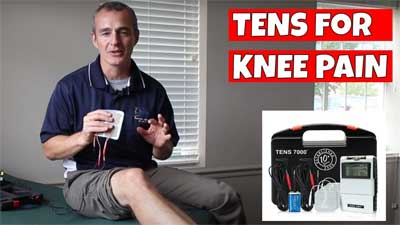
Can you use a TENS unit after knee replacement?
A TENS unit is safe to use after a total knee replacement. It is commonly used during knee flexion and extension exercises. Using TENS to reduce pain during knee replacement exercises may improve range of motion without the need for more medication.
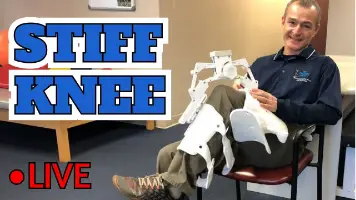
How To Stretch A Stiff Knee After Knee Replacement
Stretching a stiff knee at home requires patience and time. Research suggests a long duration low intensity stretch will produce the greatest benefits in knee range of motion. In this post I will discuss using a Joint Active Systems and static progressive stretch technique to improve knee flexion at home.
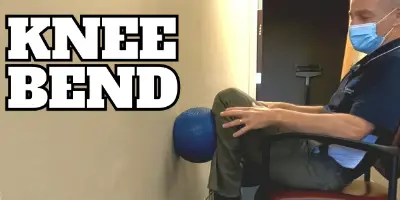
Knee Replacement Bending Flexion Exercises at Home
Knee bend, also known as knee flexion, exercises may be performed immediately following knee replacement surgery. This videos shows several examples of knee flexion exercises to be performed at home. 120 degrees of knee flexion is considered normal range of motion following surgery.

Can I Run After Knee Replacement
Conventional advice is to avoid high impact activities after a total knee replacement. This would include running, jogging, and other high impact sports. The concern is the increased wear and tear on the new knee will cause it to wear out sooner or possibly even...
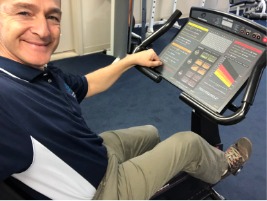
How soon after knee replacement can I use exercise bike?
It is commonly recommended to start using an exercise bike within the first 48-hours following a knee replacement. Standard practice in physical therapy is to begin the bike with a gentle rocking motion until the knee is capable of a completing full rotation without significant pain.
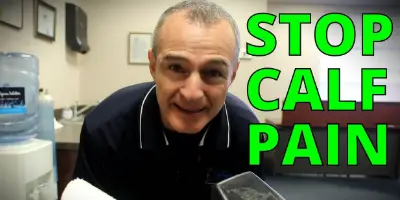
Calf Pain After Knee Replacement
Calf pain can happen for many reasons, but after surgery the most common reason is weakness, swelling, and change in activity levels. These exercises will help improve calf mobility, increase strength, and condition the calf to handle the workload associated with normal walking.
Please check with your physical therapist or doctor before performing these exercises.
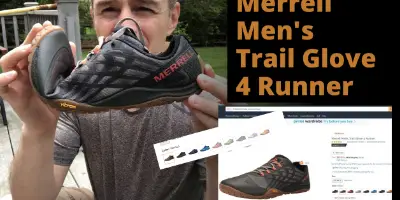
Minimalist Running Shoe Review Unboxing Merrell Men’s Trail Glove 4 Runner
The Merrell Men’s Trail Glove 4 Runner has been a great show. I am updating this description today January 1, 2020. I have worn the shoe for work in the clinic as a physical therapist as well as the occasional run. It is ideal for a medium or narrow foot. I absolutely would not recommend it for a wide foot or a foot that will swell over the day.
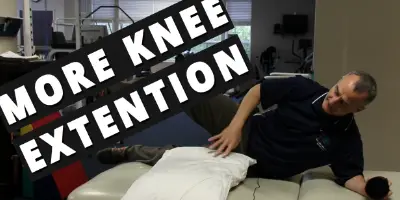
Best Tip To Improve Knee Extension- Prone Hangs
Improve knee extension with this simple and effective exercise! Total knee replacement | ACL reconstruction | Knee Surgery
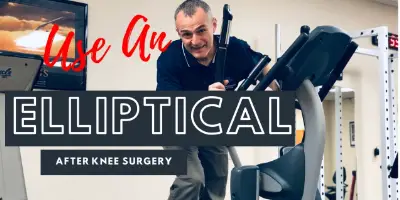
Using an Elliptical Trainer After Total Knee Replacement Surgery
Using and choosing an elliptical trainer after total knee replacement surgery or any other knee surgery can be challenging. There are so many different brands available on the market. In this video I will show you how to safely get on, off, and use the elliptical trainer whether you are using one at home, at the gym, or in your physical therapy clinic.
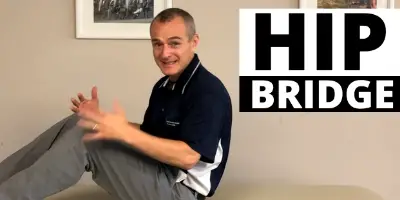
3 Versions of a Hip Bridge for Total Knee Replacement Therapy At Home
The hip bridge is a very common exercise following total knee replacement, but doing it correctly isn’t as common. There are three version of the hip bridge and in this video I share information about all three.
